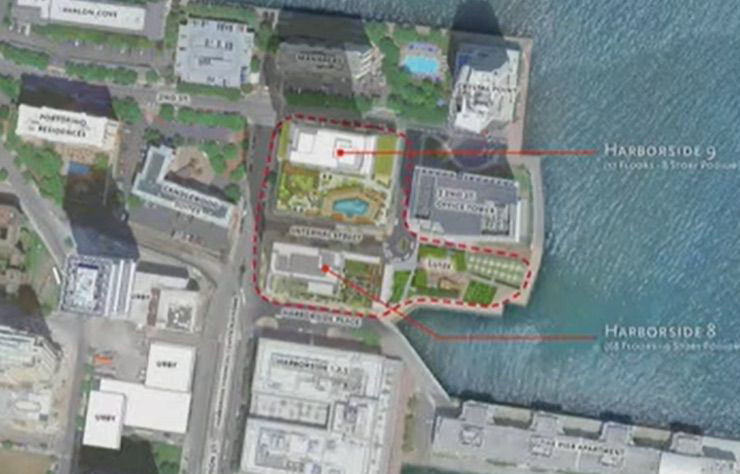Question of the Month: What are some differences between Upstate and Downstate NY real estate risk? by Rynne
 Rynne, Murphy & Associates, Inc." width="240" height="300" /> John Rynne, Rynne, Murphy & Associates, Inc.
Rynne, Murphy & Associates, Inc." width="240" height="300" /> John Rynne, Rynne, Murphy & Associates, Inc.Charles Dickens wrote the novel A Tale of Two Cities in 1859. That title always reminds me about the stark differences in real estate values between Upstate New York and Downstate New York. This article will focus on the extent of the differences and the reasons for such differences.
Last year I wrote about the substantially vacant Seneca Tower (formerly HSBC) in the city of Buffalo which reportedly had a market value in August of $18 million. A few months later it did sell to a Washington DC real estate developer for a reported price of $12.613 million or approximately $14.79 per s/f. The 45 year old high rise with approximately 853,000 s/f of rentable office space was substantially vacant. It represented one of the highest and largest office buildings in New York State outside of New York City. In 2005, the previous owners had purchased the property for approximately $85.04 million or $99.70 per s/f based upon rentable office area. This resulted in a loss of value of approximately 85%. In 2016, a former class A office building in Rochester sold for approximately $5.165 million or $23.46 per s/f for 220,214 s/f of building space. This approximately 30 year old mid-rise substantially vacant building had previously sold in 2006 for approximately $26.4 million or $119.88 per s/f when the building was substantially leased to a single tenant. This resulted in a loss of value of 80%. Real estate office buildings in Upstate market have sometimes an oversupply of space due in part to lack of demand but also incentives such as tax credits, low interest loans, grants, tax abatements, etc., which artificially promote construction of new or rehabbed space.
How do investors survive with that type of risk?
Recently there was a substantial amount of controversy regarding President Trump’s 2005 tax return which showed that he paid “only” $38 million in federal income taxes based upon gross income of approximately $153 million or approximate effective tax rate of 25%. Real estate office building owners especially know that tenant improvements generally have a very limited economic life. Many large leases have 5-10 year leases with options. The risk to the landlord is:
1) The tenant defaults and;
2) The lease expires.
In either case the landlord has to find a replacement. In many cases the new tenant may require a new floor plan and the existing space has to be rehabilitated or sometimes completely gutted. So the tenant improvements may only have an economic life of 5-10 years. This is a huge drain on the present value of the real estate. As a side note; for 2016 if someone had no deductions to their personal income, their total tax rate for both federal and state income tax in New York would be approximately 52%. That means for every dollar earned 52% goes to the government. President Trump’s critics claim that he is not paying his fair share because the top federal tax rate today with the Obama surcharge is approximately 43%. However, let’s assume that President Trump owned the Seneca Tower in Buffalo and showed the 85% loss in equity. This proves that real estate is a big risk and the depreciation deductions are justified.
Getting back to the topic of the “A Tale of Two Cities;” New York City is starkly different to Upstate New York primarily because of incredible demand. Last year, I used an example of a Middle East entity buying a minority interest in the Emprie State building which equated to a purchase price of $2,285 per s/f. Large vacant buildings which are shells are selling for $100-$300 in parts of Brooklyn and the Bronx. In Manhattan similar large shell buildings which are rehab targets are selling for $400-$600+ per s/f. This is a huge difference relative to the Upstate cities. Upstate rental apartment sales range in the Buffalo, Rochester, Syracuse, Albany markets are in the predominate range of $40,000- $80,000 per unit range. In the New York City market the predominant ranges are $400,000-$800,000 per unit in Manhattan and substantially less in boroughs such as Brooklyn and the Bronx. Some of the most low quality and low conditioned units in inferior neighborhoods in New York City still sell in the range of $100,000-$200,000 per unit range.
The major reason for the differential is Gross Domestic Product (GDP) measurements. The New York Metropolitan area has GDP approaching $1.5 trillion. The individual Metropolitan areas of Buffalo, Rochester, Syracuse, Albany are each well below $100 billion. This, is probably the biggest correlation to explain the difference in real estate values. In summary, real estate has risk for both Upstate and Downstate New York. However, the A Tale of Two Cities shows the stark contrast in the risk.
John Rynne, MAI, SRA, is president and owner of Rynne, Murphy & Associates, Inc., Rochester, N.Y.
Berger and Koicim of Marcus & Millichap sell 17-unit multi-family for $8.8 million


Behind the post: Why reels, stories, and shorts work for CRE (and how to use them) - by Kimberly Zar Bloorian

AI comes to public relations, but be cautious, experts say - by Harry Zlokower

Lasting effects of eminent domain on commercial development - by Sebastian Jablonski









.jpg)
.gif)
.gif)